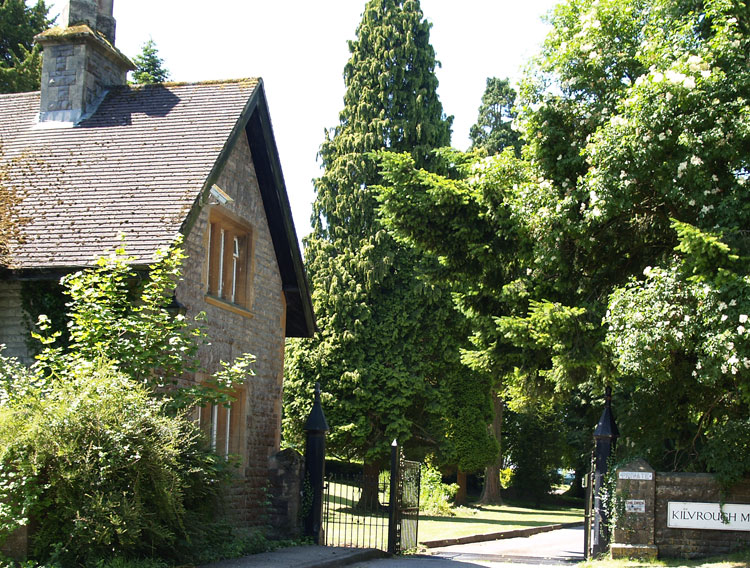Gower
082 Kilvrough Manor

HLCA082 Kilvrough Manor
Post-medieval gentry estate, designed parkland landscape: well-preserved late eighteenth/early nineteenth century house and grounds; formal and informal gardens; folly; associated buildings; and historic associations. Back to Map
Historic Background
The historic landscape area of Kilvrough Manor equates to the area of Kilvrough Manor registered park and garden (PGW (Gm) 51) with essential setting.
Kilvrough Manor (19106; 01501w; 02895w; LB 11538 II*) is situated northeast of Pennard Burrows and northwest of Pennard church just off the A4118. Kilvrough formerly belonged to the fee of Kittle and hence the manor of Pennard by the thirteenth century. However, it is recorded as being a fee in its own right owned by William de Langton but not mentioned in the de Breos charter of 1306 (Draisey 2002). By 1583 the area was in the joint ownership of Rowland Dawkins and John Bowen and was still held by these two families in 1650 (Cadw 2000). A prominent family, Rowland Dawkins was a South Wales parliamentarian and in the eighteenth century William Dawkins was High Sheriff. By 1740 the house had been rebuilt and sometime during the 1770s the house was extended westwards. William Dawkins died in 1774 leaving the estate to his daughter Mary, Marchioness de Choiseul. She let it out and eventually sold it in 1820 to Thomas Penrice. The estate stayed within the Penrice family until it passed to Lady Lyons in the early twentieth century. During the Second World War it was used as a base for troops and is now an outward-bound centre under the ownership of Oxfordshire County Council (Cadw 2000).
The parkland at Kilvrough (265710) is relatively small, situated to the south and southwest of the manor house and probably contemporary with the 1770s extension. However, during the nineteenth century the parkland extended south to the road and northwest to Ilston Cwm (Cadw 2000). The park contains a folly tower (23081, LB 22839 II), small circular and roofless it once had two levels and is topped by battlements. The gardens surround the house on all sides and comprise a kitchen garden to the north with ruined glasshouse, which has now been incorporated into the ornamental garden; and Italian garden to the south with large sunken lawn surrounded by scrub and trees and old fountain (Cadw 2000). Both these gardens seem to have been established in the nineteenth century, evident by the planting of rhododendrons. To the west of the main house is Kilvrough Lodge (302183) built in 1872. A more detailed history of the park and garden can be found in the Register of Parks and Gardens in Wales, Cadw 2000.